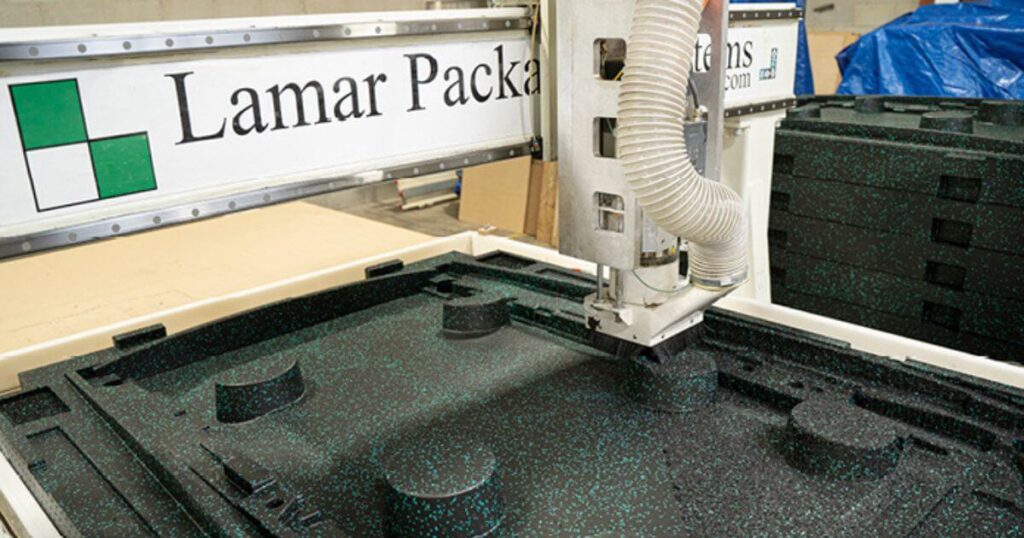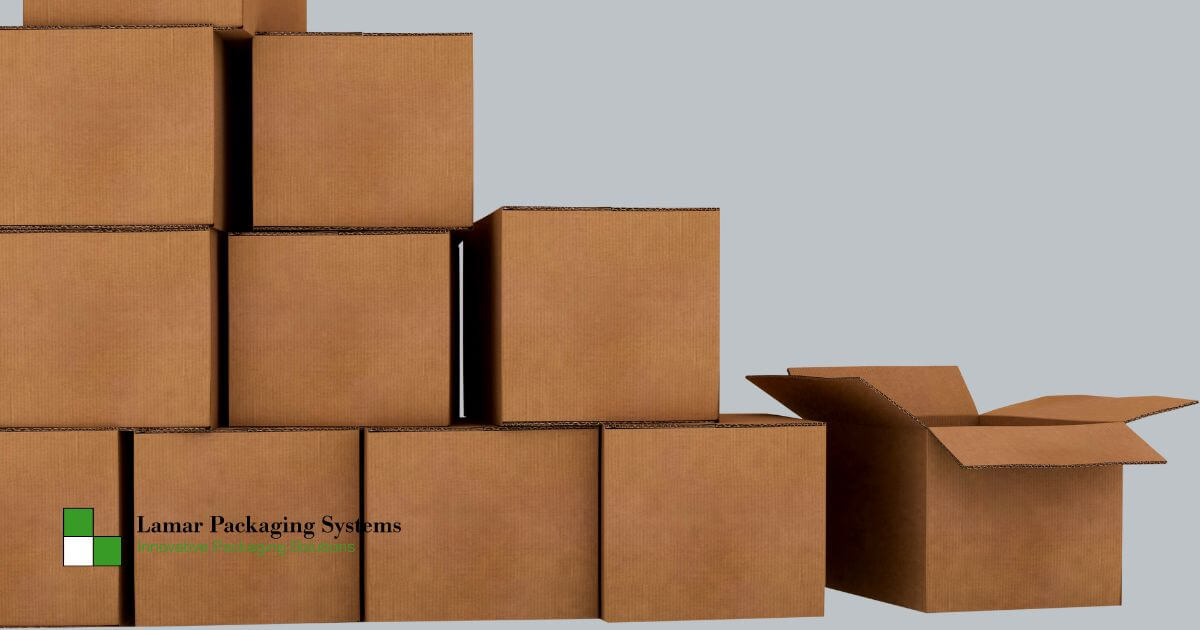In today’s fast-paced, competitive business landscape, packaging optimization has emerged as a critical component of supply chain management. By streamlining packaging processes, reducing waste, and enhancing product protection, companies can unlock significant cost savings, improve operational efficiency, and minimize their environmental footprint. Lamar Packaging System, specializing in innovative packaging solutions, exemplifies how integrating advanced packaging services can transform a business’s supply chain dynamics. In this article, we’ll explore the vital role of packaging optimization in the supply chain and reveal proven strategies for achieving a leaner, greener, and more profitable operation.
Understanding the Role of Packaging in the Supply Chain
Packaging plays a multifaceted role in the supply chain, serving various functions that extend far beyond mere product containment. Let’s examine these functions in detail:
- Protective function: The primary purpose of packaging is to safeguard products from damage during handling, storage, and transportation. Effective packaging design ensures that goods arrive at their destination in pristine condition, reducing the risk of product loss and customer dissatisfaction.
- Storage and transport functions: Packaging must be designed to facilitate efficient storage and transportation. By optimizing packaging dimensions and materials, companies can maximize space utilization in warehouses and cargo units, leading to reduced storage and freight costs.
- Sales and promotional functions: Packaging serves as a powerful marketing tool, attracting customer attention and communicating brand values. Well-designed packaging can enhance product appeal, boost sales, and foster brand loyalty.
- Services and guarantee functions: Packaging often incorporates essential product information, such as ingredients, instructions, and warnings. This information not only ensures regulatory compliance but also provides customers with valuable insights into product usage and safety.
- Tertiary functions: Beyond primary and secondary packaging, tertiary packaging, such as pallets and containers, plays a crucial role in protecting and organizing goods during transportation. Optimizing tertiary packaging can lead to improved handling efficiency and reduced damage risks.
By understanding and leveraging these diverse functions, companies can create packaging solutions that optimize supply chain performance and deliver tangible business benefits.
Key Strategies for Packaging Optimization
To achieve a leaner, greener supply chain through packaging optimization, consider implementing the following strategies:
1. Right-sizing packaging
One of the most effective ways to optimize packaging is by right-sizing. This involves tailoring packaging dimensions to precisely fit the requirements of the shipped product, minimizing excess space and material waste. By eliminating unnecessary voids and reducing packaging volume, companies can:
- Lower material costs
- Reduce shipping expenses
- Improve space utilization in warehouses and cargo units
- Minimize environmental impact
To ensure continuous optimization, invest in advanced tools and technologies that analyze shipping trends, order sizes, and destination specifics. These solutions can dynamically adjust packaging parameters, ensuring that your packaging remains efficient and cost-effective as your business evolves.
2. Eco-friendly materials and sustainable practices
Sustainability has become a top priority for businesses and consumers alike. By adopting eco-friendly packaging materials and practices, companies can reduce their environmental footprint and enhance their brand image. Consider the following strategies:
- Utilize biodegradable, compostable, or recycled materials to minimize waste and promote a circular economy.
- Collaborate with suppliers and designers to develop innovative, waste-reducing packaging solutions.
- Educate customers about the environmental benefits of your sustainable packaging choices.
In addition to the ecological advantages, eco-friendly materials often weigh less than traditional alternatives, potentially reducing shipping costs and further enhancing supply chain efficiency.
3. Smart packaging solutions
The rise of smart packaging technologies has revolutionized the way companies track and monitor their goods throughout the supply chain. By implementing RFID tags, IoT devices, and other smart solutions, businesses can:
- Achieve real-time visibility into the location and condition of each package
- Streamline inventory management and decision-making processes
- Improve last-mile efficiency and security
- Enhance customer satisfaction through accurate and timely deliveries
For example, by strategically tagging products with RFID chips, companies can gain comprehensive insights into the movement of goods, enabling proactive decision-making and minimizing the impact of potential disruptions.
4. Collaborative supply chain packaging design
Effective packaging optimization requires a collaborative approach that involves all stakeholders in the supply chain. By fostering partnerships with suppliers, packaging converters, and other key players, companies can:
- Develop innovative, waste-reducing designs that meet the unique needs of their products and supply chain
- Share insights and best practices to identify opportunities for improvement and cost reduction
- Ensure a holistic approach to packaging optimization that considers the entire product lifecycle
Through open communication and collaboration, businesses can create packaging solutions that balance cost, sustainability, and product protection, ultimately driving supply chain efficiency and customer satisfaction.
Practical Tips for Implementing Packaging Optimization
Embarking on a packaging optimization journey can seem daunting, but with the right approach and tools, companies can achieve significant results. Consider the following practical tips:
1. Conduct a comprehensive packaging audit
Before implementing any optimization strategies, it’s essential to assess your current packaging materials, processes, and costs. A thorough packaging audit can help you:
- Identify areas for improvement and cost reduction
- Evaluate the environmental impact of your existing packaging
- Benchmark your packaging performance against industry best practices
By gaining a clear understanding of your packaging landscape, you can prioritize optimization efforts and allocate resources effectively.
2. Invest in automation and data-driven decision-making
Packaging optimization is not a one-time effort, but rather an ongoing process that requires continuous refinement. To stay ahead of the curve, consider investing in:
- Automated packaging equipment that streamlines repetitive tasks and improves efficiency
- Data analytics tools that provide insights into packaging performance and help optimize configurations
- Artificial intelligence and machine learning technologies that enable predictive maintenance and adaptive packaging design
By leveraging automation and data-driven decision-making, companies can continuously refine their packaging strategies, ensuring sustained efficiency and cost savings.
3. Prioritize efficient use of space
Efficient space utilization is a critical aspect of packaging optimization. To maximize the use of available space, consider:
- Designing compact, fulfillment-centric packaging that minimizes empty space and reduces shipping costs
- Exploring flat-pack solutions that optimize storage and transportation
- Collaborating with warehousing and logistics partners to ensure packaging aligns with their infrastructure and processes
By prioritizing space efficiency, companies can reduce storage and transportation costs, improve handling processes, and minimize their environmental impact.
Overcoming Challenges in Packaging Optimization
While the benefits of packaging optimization are clear, implementing these strategies can present certain challenges. Some common hurdles include:
- Balancing cost, sustainability, and product protection: Finding the right balance between these competing priorities can be difficult, particularly when dealing with delicate or perishable products. Companies must carefully evaluate the trade-offs and develop solutions that meet their specific needs.
- Navigating diverse regulatory requirements: As businesses expand into new markets, they must contend with varying packaging regulations and standards. Ensuring compliance across multiple jurisdictions can be complex and time-consuming.
- Adapting to evolving consumer preferences: Consumer demands for sustainable, convenient, and innovative packaging are constantly evolving. Companies must stay attuned to these changing preferences and adapt their packaging strategies accordingly.
To overcome these challenges, businesses must foster a culture of continuous improvement, invest in employee training and education, and remain open to new technologies and approaches. By embracing change and collaborating with industry partners, companies can successfully navigate the complexities of packaging optimization and reap the rewards of a leaner, greener supply chain.

The Future of Packaging Optimization
As technology advances and sustainability becomes an even greater priority, the future of packaging optimization looks bright. Some emerging trends and technologies that are poised to shape the industry include:
- Intelligent packaging: The integration of sensors, trackers, and other smart technologies into packaging will enable even greater visibility and control over the supply chain. These solutions will help companies monitor product freshness, detect tampering, and optimize inventory management.
- Circular economy principles: The shift towards a circular economy, in which resources are kept in use for as long as possible, will drive the development of more sustainable packaging materials and designs. Companies will increasingly adopt reusable, recyclable, and biodegradable packaging solutions to minimize waste and promote a closed-loop system.
- Personalization and customization: Advances in digital printing and manufacturing technologies will enable companies to offer highly personalized and customized packaging options. This trend will not only enhance the customer experience but also create opportunities for more targeted and efficient packaging designs.
As these trends and technologies continue to evolve, businesses that embrace packaging optimization will be well-positioned to thrive in the future of supply chain management.
Trust Lamar Packaging System for Packaging Optimization
Packaging optimization is a powerful tool for achieving a leaner, greener, and more efficient supply chain. By right-sizing packaging, adopting eco-friendly materials, leveraging smart technologies, and fostering collaboration, companies can unlock significant cost savings, improve operational performance, and minimize their environmental impact.
However, packaging optimization is not a one-time exercise, but rather an ongoing journey that requires continuous improvement and adaptation. By staying informed about emerging trends, investing in the right tools and strategies, and cultivating a culture of innovation, businesses can successfully navigate the challenges of packaging optimization and reap the rewards of a more sustainable and profitable supply chain.
As the business landscape continues to evolve, packaging optimization will become an even more critical component of supply chain management. By embracing this opportunity and taking a proactive approach to packaging design and implementation, companies can position themselves for long-term success in an increasingly competitive and environmentally conscious world.

Frequently Asked Questions
1. What are the most effective materials for sustainable packaging?
Some of the most effective sustainable packaging materials include:
- Biodegradable plastics made from renewable resources like corn starch or sugarcane
- Recycled paper and cardboard
- Molded pulp from recycled paper or agricultural waste
- Plant-based materials such as bamboo, mushrooms, and seaweed
2. How can businesses balance the costs of packaging optimization with its benefits?
To balance the costs and benefits of packaging optimization, companies should:
- Conduct a thorough cost-benefit analysis to identify areas where optimization can yield the greatest returns
- Prioritize initiatives that deliver both cost savings and environmental benefits
- Invest in technologies and processes that enable long-term efficiency gains
- Collaborate with suppliers and industry partners to share costs and knowledge
3. What are some common mistakes to avoid when implementing packaging optimization strategies?
Some common mistakes to avoid include:
- Focusing solely on cost reduction without considering product protection or customer experience
- Failing to engage all stakeholders in the optimization process
- Neglecting to test and validate new packaging designs before implementation
- Overlooking the importance of employee training and change management
4. How can companies ensure compliance with international packaging regulations?
To ensure compliance with international packaging regulations, businesses should:
- Stay informed about the latest regulatory developments in their target markets
- Partner with local experts and legal counsel to navigate complex requirements
- Develop a centralized system for tracking and managing packaging compliance across multiple jurisdictions
- Regularly audit their packaging practices to identify and address any gaps or risks
5. What role does technology play in enabling successful packaging optimization?
Technology plays a crucial role in enabling successful packaging optimization by:
- Providing data-driven insights into packaging performance and opportunities for improvement
- Enabling real-time monitoring and tracking of packages throughout the supply chain
- Automating repetitive tasks and processes to improve efficiency and accuracy
- Facilitating collaboration and knowledge-sharing among supply chain partners
By leveraging the power of technology, companies can gain a competitive edge in the race to optimize their packaging and build a more sustainable and profitable supply chain.
Ready to unlock the full potential of your supply chain through packaging optimization? Contact Lamar Packaging System today to discuss tailored solutions that will help you reduce costs, enhance efficiency, and achieve your sustainability goals. Our expert team is dedicated to helping businesses like yours thrive in the ever-evolving landscape of supply chain management. Don’t wait – optimize your packaging now and start reaping the benefits!

